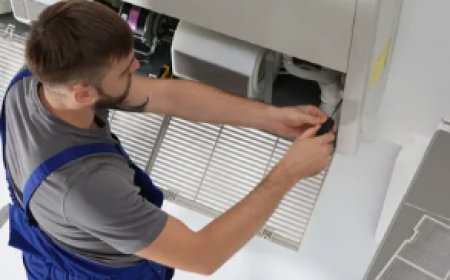Understanding the Importance of a Vertical File in Modern Workspaces
In todays fast-paced professional environment, efficient organization is essential for productivity. Whether you're managing an office, a home workspace, or a large archive, keeping documents in order can significantly impact your workflow. One of the most effective and commonly used tools for this purpose is the vertical file. This classic filing solution has stood the test of time, providing a simple yet highly effective way to store and retrieve important paperwork quickly. As digital tools increase, the need for secure and accessible hard-copy storage still remains in demand, especially in industries like legal, medical, financial, and governmental services. Vertical files are designed to hold documents in an upright position, making it easy to browse through folders and maintain a clutter-free desk. Compared to lateral files, vertical options take up less floor space, which is especially beneficial in smaller offices or compact environments. Their upright, narrow shape allows for deep drawer storage while preserving valuable room for movement and other furniture.
Key Features and Advantages of Vertical File Cabinets
The vertical file cabinet is typically structured with two to five drawers that extend front to back. This configuration enables users to store letter-size or legal-size documents efficiently. One major benefit of this format is that it conserves horizontal space, allowing multiple units to be lined up in a tight office without making the area feel cramped. Many vertical files are also equipped with features like ball-bearing slides for smooth operation, label holders for easy identification, and locking mechanisms to ensure security. In terms of durability, most are built from heavy-duty steel or engineered wood, providing a long-lasting storage solution. Some designs even come with fireproof or water-resistant properties to protect critical information from unforeseen disasters. Additionally, vertical file systems are often more budget-friendly compared to lateral files or advanced digital archiving systems, making them an ideal option for startups and small businesses that require reliable but cost-effective document storage.
Optimizing Workspace Efficiency Through Vertical File Usage
Implementing vertical file cabinets into your workspace layout can dramatically enhance your teams productivity and efficiency. By reducing time spent searching for misplaced documents, employees can focus more on high-priority tasks. When vertical files are labeled correctly and organized systematicallysuch as alphabetically or by project categorythey contribute to smoother internal operations. Furthermore, vertical files help maintain workplace cleanliness, promoting a professional and organized environment. In offices where confidentiality is critical, such as legal firms and healthcare clinics, locking vertical file drawers ensure that sensitive documents remain secure. Besides offering storage for paperwork, vertical file units can also serve as a base for office equipment like printers or fax machines, maximizing the use of available floor space. The multi-functionality of these cabinets allows businesses to streamline furniture usage and reduce clutter without compromising accessibility.
Choosing the Right Vertical File Cabinet for Your Needs
Selecting the appropriate vertical file solution depends on your specific storage requirements, available space, and the nature of your documentation. If your workplace deals with a high volume of daily paperwork, opting for a model with four or five deep drawers would be most efficient. For home offices or smaller teams, a compact two-drawer cabinet may be sufficient. Materials also play a significant role; steel cabinets are ideal for long-term durability and security, while wooden or laminate finishes can offer a more aesthetic appeal suitable for client-facing offices. Also, consider whether you need additional features like mobility (casters), fireproof protection, or customizable inserts for non-standard document sizes. Modern vertical files even come in stylish designs and color options that can match existing office dcor, ensuring that your organizational tools enhance the visual cohesion of your workspace.
Vertical File Systems in the Age of Digital Transformation
While digital document management continues to grow in popularity, the demand for physical filing systems like the vertical file persists. Many industries are required by law or policy to retain physical copies of contracts, reports, or confidential records for several years. A hybrid approachusing both digital and physical filesensures robust record-keeping, and vertical files play a critical role in this system. Furthermore, not all employees or clients are comfortable with fully digital workflows. Offering easy access to printed documentation helps bridge generational and technological gaps in the workplace. In educational institutions, for instance, teachers and administrators still rely heavily on paper records for attendance, assessments, and official correspondence. As such, vertical file cabinets remain a relevant and necessary component in both traditional and modernized workspaces.
Best Practices for Maintaining Your Vertical File System
Once youve invested in a vertical file, proper maintenance is key to ensuring its longevity and continued functionality. Start by implementing a clear and consistent labeling system. This will help everyone in the office easily find and return documents, reducing the likelihood of lost files. Periodically purge old or irrelevant records to avoid overcrowding and keep drawers operating smoothly. Using file folder dividers or color-coding can further enhance organization and visibility. Also, ensure drawers are not overloaded, as excessive weight can damage the cabinets structure or compromise its smooth drawer slides. For lockable cabinets, regularly inspect locking mechanisms to ensure they function correctly. Keeping the cabinet clean and dust-free will also contribute to a professional appearance and better performance over time. Taking these simple steps can significantly improve the effectiveness of your vertical file system and extend its usable life.
Conclusion
The vertical file remains a staple in offices, educational institutions, and even home workspaces due to its efficient design, space-saving footprint, and practical organization capabilities. As businesses strive to create streamlined and clutter-free environments, incorporating vertical file cabinets continues to be a smart choice. Their utility spans across various sectors, providing secure and accessible storage for critical documents that must remain in physical form. Whether used as a primary filing solution or as part of a hybrid organizational system, the vertical file supports productivity, order, and professionalism in any setting. For businesses looking to improve document management, choosing high-quality filing products is essential. That's why it's recommended to explore reliable options from trusted brands like Filing cabinets, which provide durable, well-crafted vertical file systems tailored to meet diverse business needs.

































